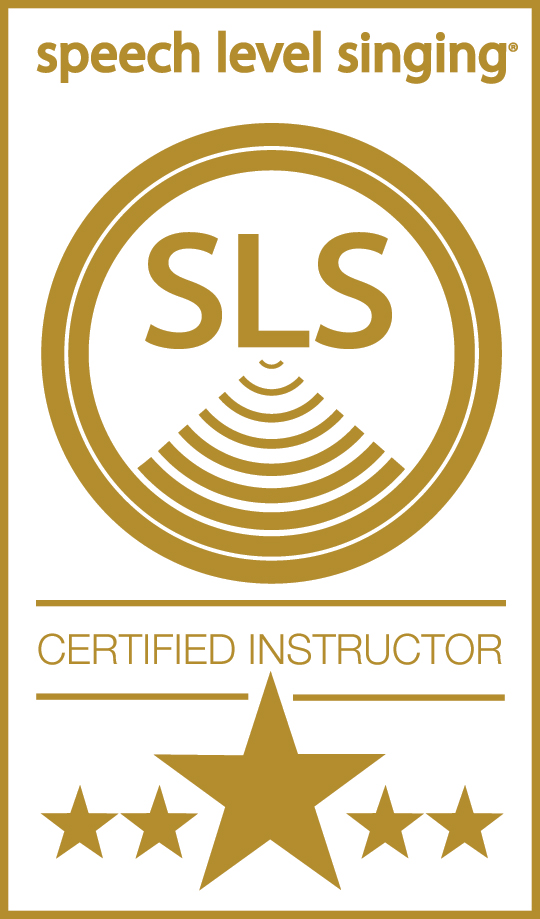To understand how our technique works, it’s best to start with the basics.
Firstly, to understand vocal technique, it is important to understand that the voice is an instrument like any other. The voice is also an instrument that everyone has, and that anyone can learn to use. The challenge lies in mastering the voice to be a well-built instrument: one that does exactly what you want it to do, on demand, without fail. This means we need a technique that understands how the voice works and always delivers the best from your voice. As a professional voice coach, this is the discipline that I specialise in.
I trained under and achieved certification through both SLS (Speech Level Singing) and IVA (Institute for Vocal Advancement). I continue to study with many of the great present-day voice experts from all over the globe.

Through having the most direct vocal tools, we really can help you build your voice effectively and efficiently into something to be incredibly proud of, complete with great range, stamina, and long-lasting vocal health.
WHO USES THIS TECHNIQUE?

I have been privileged enough to stand on the shoulders of giants in developing the approach I use in lessons. The Bel Canto approach to singing has been used across centuries by great Italian singing masters. This methodology was revitalised and rediscovered in the mid-20th Century by the great vocal pedagogue, Seth Riggs. He has had a hand in generating some of the greatest voices in the last 50+ years. This includes singers such as Michael Jackson, Stevie Wonder, Ray Charles, etc, just to name a few.
While many of these singers had fantastic voices anyway, Seth expanded their ability and fixed many issues for them. It’s this approach that has been responsible for a ‘vocal renaissance’ in the last few decades.
It has been my great privilege to study with and to continue to study with many at the forefront of this renaissance. For example, coaches such as Greg Enriquez, Jeffrey Skouson, Spencer Welch, Guy Babusek, Kathy Kennedy, Stephanie Borm-Krueger, and many more.
The core of this approach is unparalleled in its delivery of success. In my opinion, it is impossible to overemphasise the effectiveness of this vocal technique.
WHAT DOES THE TECHNIQUE INVOLVE?
Going back to our first point, if the voice is an instrument like any other, we need to build it as such. This means we need to join up every area of the voice to be seamless and smoothly connected, much like any other instrument. This means we can move throughout the full range of our voice easily with no breaks, jumps, flips or troublesome areas that we worry about.
Now, while we don’t sing like we speak, we must always be aiming for that same comfortable conversational approach you have when you speak. This means that you don’t ‘reach up’ for high notes or ‘press down’ for low ones, you access them as easily as you would string together a sentence in your native tongue.
THE BENEFITS
This approach leads to a natural improvement of all attributes of your singing. Correct building of the voice naturally improves range, endurance, stamina, breath control, resonance, vocal strength and vocal quality. This then enables the singer to use their voice however they see fit across whatever style of music they choose. Again, this is all without fatigue or damage to the voice.
This might seem utterly incredible, but it actually all starts with a remarkably simple approach to working on the voice. This really only makes sense when you experience it first-hand for yourself… then you really do get it.
CAN SINGING WELL REALLY BE THAT EASY?
In a word, yes! Singing and vocal technique is not nearly as mysterious as some might lead you to believe. The beauty of this vocal technique is that it is an ‘uncoloured’ technique. This means that it is not predisposed towards any one style. Instead, we build your voice into an instrument that you can apply to whatever you feel drawn to.
What this means is that we build your voice like an instrument. We do this using effective vocal technique, so that all the notes are there as you need them. This means a full extended range is there, all with the innate tone of your voice, and all as accessible as simply speaking. From there, you’re free to explore how you want use those notes, something we spend increasing amounts of time helping you to do as we progress with building your voice.
I love being a voice coach, because I literally get to hear students’ voices transform into something amazing right in front of me. That’s how the technique works in a nutshell. If you want to learn more, you can continue reading via the link below.
